|

Book IV - Antarctica Enigma
from
Violations Website
Part I - The Antarctic Enigma
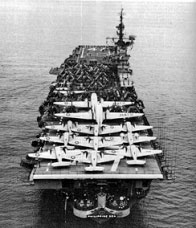 This invasion of the continent of
Antarctica was named ‘Operation High Jump’
and comprised of some 4700 military personnel, six helicopters, six Martin PBM flying boats, two seaplane tenders, fifteen other aircraft, thirteen US
Navy support ships and one aircraft carrier: the USS Philippine Sea (right). This invasion of the continent of
Antarctica was named ‘Operation High Jump’
and comprised of some 4700 military personnel, six helicopters, six Martin PBM flying boats, two seaplane tenders, fifteen other aircraft, thirteen US
Navy support ships and one aircraft carrier: the USS Philippine Sea (right).
It seems incredible that so shortly after a war that had decimated most of
Europe and crippled global economies, an expedition to Antarctica was
undertaken with so much haste (it took advantage of the first available
Antarctic summer after the war), at such cost, and with so much military
hardware - unless the operation was absolutely essential to the security of
the United States.
At the time of the operation, the US Navy itself was being taken apart piece
by piece as the battle-tested fleet was decommissioned with its mostly
civilian crew bidding farewell to the seas forever.
The Navy was even
reduced to further recruitment to man the few remaining ships in service
(1).
Tensions across the globe were also mounting as Russia and America edged
into a Cold War, possibly a Third World War that the US would have to fight
with,
"tragically few ships and tragically half trained men
(2)."
This made
the sending of nearly 5,000 residual Navy personnel to a remote part of the
planet where so much danger lurked in the form of icebergs, blizzards and
sub-zero temperatures even more of a puzzle.
The operation was also launched
with incredible speed, "a matter of weeks (3)."
Perhaps it would not be
uncharitable to conclude that the Americans had some unfinished business
connected with the war in the polar region. Indeed this was later confirmed
by other events and the operation’s leader, Admiral Richard Byrd, himself.
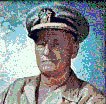 However, the official instructions issued by the then Chief of Naval
Operations, Chester W. Nimitz (left), himself of German descent, were: However, the official instructions issued by the then Chief of Naval
Operations, Chester W. Nimitz (left), himself of German descent, were:
-
train personnel and test material in the frigid zones
-
consolidate
and extend American sovereignty over the largest practical area of the
Antarctic continent
-
to determine the feasibility of establishing and
maintaining bases in the Antarctic and to investigate possible base sites
-
to develop techniques for establishing and maintaining air bases on the
ice, (with particular attention to the later applicability of such
techniques to Greenland)
-
amplify existing knowledge of hydrographic,
geographic, geological, meteorological and electromagnetic conditions in the
area
(4)
Little other information was released to the media about the mission,
although most journalists were suspicious of its true purpose given the huge
amount of military hardware involved.
The US Navy also strongly emphasized
that Operation High Jump was going to be a navy show; Admiral Ramsey’s
preliminary orders of 26th August 1946 stated that,
"the Chief of Naval
Operations only will deal with other governmental agencies" and that "no
diplomatic negotiations are required. No foreign observers will be
accepted."
Not exactly an invitation to scrutiny, even from other arms of
the government.
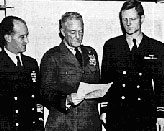 Admiral Byrd (centre
- image right), was a strategic choice as he was a national hero to
the Americans; he had pioneered the technology that would be a foundation
for modern polar exploration and investigation, had been repeatedly
decorated, had undertaken many expeditions to Antarctica and was also the
first man to fly over both poles. Admiral Byrd (centre
- image right), was a strategic choice as he was a national hero to
the Americans; he had pioneered the technology that would be a foundation
for modern polar exploration and investigation, had been repeatedly
decorated, had undertaken many expeditions to Antarctica and was also the
first man to fly over both poles.
However, the task force itself, remained strictly under the military command
of Rear Admiral Richard Cruzen (left - right image).
The ships of the central group entered the ice pack off the Ross Sea on 31st
December 1946 and found conditions as bad as had been noted for over a
century.
cebreakers such as the USCGC Burton Island (below), a ship that
had only recently been commissioned and was still undergoing sea trials off
the Californian coast when Operation High Jump was launched, fought to cut a
way through the ice to help the men land. (Again, pulling a newly
commissioned ship off trials adds to the sense of the urgency of the overall
operation.)
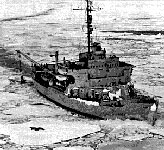 The main force was divided into three groups. The
Central Group comprised of
the USS Mt. Olympus (communications); USS Yancey (supply); USS Merrick
(Supply); USS Sennet (submarine); USCGC Burton Island (Icebreaker) and
USCGC
Northwind (icebreaker.) The main force was divided into three groups. The
Central Group comprised of
the USS Mt. Olympus (communications); USS Yancey (supply); USS Merrick
(Supply); USS Sennet (submarine); USCGC Burton Island (Icebreaker) and
USCGC
Northwind (icebreaker.)
The East Group consisted of the USS Pine Island
(seaplane tender); USS Brownson (destroyer) and the USS Canisteo (tanker).
Finally there was the West Group which was made up of the USS Currituck
(seaplane tender); the USS Henderson (Destroyer) and the USS Capapon
(tanker.) The operation also had the aircraft carrier USS Philippine and a
Base Group headed by Commander Clifford M. Campbell.
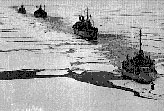 Following its arrival at Antarctica, the force began a reconnaissance of the
continent. Byrd himself was onboard the first of the planes to take off on
29th January 1947. Following its arrival at Antarctica, the force began a reconnaissance of the
continent. Byrd himself was onboard the first of the planes to take off on
29th January 1947.
Rocket propulsion tubes (JATO bottles) had been attached
to the side of the aircraft and the carrier was maneuvered for a 35mph run
to help get the planes airborne.
"From the vibration of the great carrier", Byrd later wrote, "I knew when the captain had got the ship up to about 30
knots (35 mph). We seemed to creep along the deck at first and it looked as
if we would never make it…
But when our four JATO bottles went off along
the sides of the plane with a terrific, deafening noise I could see the deck
fall away. I knew we had made it
(5)."
Over the next four weeks the planes spent 220 hours in the air, flying a
total of 22,700 miles and taking some 70,000 aerial photographs
(6).
 Then the mission that had been expected to last for between 6-8 months, came
to an early and faltering end. The Chilean press reported that the mission
had "run into trouble" and that there had been "many fatalities". Then the mission that had been expected to last for between 6-8 months, came
to an early and faltering end. The Chilean press reported that the mission
had "run into trouble" and that there had been "many fatalities".
(The
official record, though, states that one plane crashed killing three men; a
fourth man had perished on the ice; two helicopters had gone down although
their crews had been rescued and a task force commander was nearly lost.)
(7)
The Chilean claims to one side, it is known that the Central Group of
Operation High Jump were evacuated by the Burton Island ice-breaker from the
Bay of Whales (above) on 22nd February 1947; the Western Group headed home
on 1st March 1947 and the Eastern Group did likewise on 4th March, a mere
eight weeks after arrival.
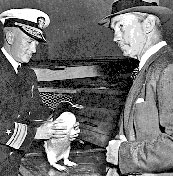 Quite what was going on is still not a matter of public record, however it
is known that Byrd was immediately summoned to Washington and interrogated
by the Security Services on his return after being initially ‘welcomed back’
by Secretary of War James Forrestal (right) on 14th April 1947. (Forrestal
was late to commit suicide.) Quite what was going on is still not a matter of public record, however it
is known that Byrd was immediately summoned to Washington and interrogated
by the Security Services on his return after being initially ‘welcomed back’
by Secretary of War James Forrestal (right) on 14th April 1947. (Forrestal
was late to commit suicide.)
On 5th March 1947 the ‘El Mercurio’ newspaper of Santiago,
Chile, ran the
headline ‘On Board the Mount Olympus on the High Seas’ which quoted Byrd in
an interview with Lee van Atta.
"Adm. Byrd declared today that it was
imperative for the United States to initiate immediate defense measures
against hostile regions.
The Admiral further stated that he didn’t want to
frighten anyone unduly but it was a bitter reality that in case of a new war
the continental United States would be attacked by flying objects which
could fly from pole to pole at incredible speeds.
Admiral Byrd repeated the above points of view, resulting from his personal
knowledge gathered both at the north and south poles, before a news
conference held for International News Service."
Bearing in mind that all
this occurred (the search for craft that could fly from pole to pole at
‘incredible’ speeds) a year after the war had ended with Germany defeated,
makes it all the more intriguing.
So who was the enemy that owned or flew these flying objects?
Germany was
apparently defeated, and there was no evidence that the new emerging enemy,
Russia, had such superior technologies.
Certainly there was no other known
country whose activities that could explain the US invasion of Antarctica
nor for the development of any craft that could fly,
"fly from Pole to pole
with incredible speeds."
Rumors began to circulate that whilst Germany had
been defeated, a selection of military personnel and scientists had fled the
fatherland as Allied troops swept across mainland Europe and established
themselves at a base on Antarctica from where they continued to develop
advanced aircraft based on extraterrestrial technologies.
(It is interesting
to note that at the end of the war the Allies determined that there were
250,000 Germans unaccounted for, even taking into account casualties and
deaths.)
Incredible as it may sound, there is considerable supporting evidence for
these claims about a German base for, on the very eve of the Second World
War, the Germans themselves had invaded part of Antarctica and claimed it
for the Third Reich.
In fact Hitler had authorized several expeditions to the poles shortly
before WWII. Their stated objective was to either to rebuild and enlarge
Germany’s whaling fleet or test out weaponry in severely hostile conditions.
Yet, if true, all of this could have been achieved at the North Pole rather
than at both poles and been much closer to home.
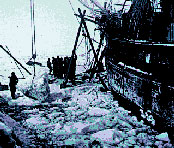 The Germans had long held an interest in the South Polar region of
Antarctica with the first Germanic research of that area being undertaken in
1873 when Sir Eduard Dallman (1830-1896) discovered new Antarctic routes
with his ship ‘Grönland’ during his expedition for the
German polar
Navigation Company of Hamburg. The Germans had long held an interest in the South Polar region of
Antarctica with the first Germanic research of that area being undertaken in
1873 when Sir Eduard Dallman (1830-1896) discovered new Antarctic routes
with his ship ‘Grönland’ during his expedition for the
German polar
Navigation Company of Hamburg.
(The Grönland also achieved the distinction
of being the first steamer to operate in the southern ocean.)
 A further expedition took place in the early years of the twentieth century
in the ship the Gauss (which became embedded in the ice for 12 months
- left), and then a further expedition took place in 1911 under the command
of Wilhelm Filchner (right) with his ship the ‘Deutchland’. A further expedition took place in the early years of the twentieth century
in the ship the Gauss (which became embedded in the ice for 12 months
- left), and then a further expedition took place in 1911 under the command
of Wilhelm Filchner (right) with his ship the ‘Deutchland’.
Between the wars, the Germans made a further voyage in 1925 with a specially
designed ship for the Polar Regions, the ‘Meteor’ under the command of
Dr.
Albert Merz.
 Then, in the years directly preceding the Second World War, the Germans laid
claim to parts of Antarctica in order to set up a permanent base there. Then, in the years directly preceding the Second World War, the Germans laid
claim to parts of Antarctica in order to set up a permanent base there.
Given that no country actually ‘owned’ the continent and it couldn’t exactly
be conquered as no-one lived there during the winter months at least, it
appeared to the Germans that the most effective way to ‘conquer’ part of the
continent was to physically travel there, claim it, let others know of their
actions and await any disagreements.
Captain Alfred Ritscher (left) was chosen to lead the proposed strike. He
had already led expeditions to the North Pole and had proved himself in
adverse and critical situations.
For the mission Ritscher was given the ‘Schwabenland’; a German
aircraft carrier that had been used for transatlantic mail deliveries by
special flightboats, the famous 10 ton Dornier Super ‘Wals’ since 1934.
 These ‘Wals’ were launched by catapult from the
Schwabenland and had to be
accelerated to 93mph before they could become airborne. At the end of each
flight a crane on the ship lifted the aircraft back on board after they
landed in the sea. These ‘Wals’ were launched by catapult from the
Schwabenland and had to be
accelerated to 93mph before they could become airborne. At the end of each
flight a crane on the ship lifted the aircraft back on board after they
landed in the sea.
The ship was refitted for the expedition in the shipyards of Hamburg, and
around one million Reichmark - nearly a third of the entire expedition
budget - was spent on this refit alone.
The crew was prepared for the mission by the German Society of Polar
Research and as these preparations neared completion, the organization
invited Admiral Byrd to address them, which he did.
The Schwabenland (below) left the port of Hamburg on 17th December 1938 and followed
a precisely planned and determined route towards the southern continent. In
little over a month the ship arrived at the ice covered Antarctica, dropping
anchor at 4° 30' W and 69° 14' S on January 20th 1939
(8).
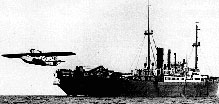 The expedition then spent three weeks off Princess Astrid Coast and Princess
Martha Coast off Queen Maud Land
(9). The expedition then spent three weeks off Princess Astrid Coast and Princess
Martha Coast off Queen Maud Land
(9).
During these weeks, the two
Schwabenland aircraft, the ‘Passat’ and ‘Boreas’, flew 15 missions across
some 600,000 square kilometers of Antarctica, taking more than 11,000
pictures of the area with their specially designed ‘Zeiss Reihenmess-bildkameras RMK 38’. (One of these photographs, below right.)
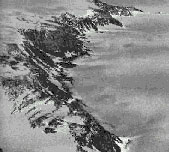 These pictures showed that some of the older Norwegian maps of the area from
1931 were not only inaccurate, but occasionally fabricated, as the original
‘maps’ bore no resemblance to the photographic images now obtained. These pictures showed that some of the older Norwegian maps of the area from
1931 were not only inaccurate, but occasionally fabricated, as the original
‘maps’ bore no resemblance to the photographic images now obtained.
(In fact
the Norwegian expeditions that had prepared these earlier maps had never
actually gone as far inland as some of the areas detailed on their maps.)
Nearly one fifth of Antarctica was reconnoitered in this way and, for the
first time, ice-free areas with lakes and signs of vegetation were
discovered.
This area was then declared to be under the control of the German
expedition, renamed ‘Neu-Schwabenland’ and hundreds of small stakes,
carrying the swastika, were dumped on the snow-covered ground from the
‘Wals’ to signal the new ownership.
Part II - The Antarctic Enigma
Ritscher and the Schwabenland left their newly claimed territory in the
middle of February 1939 and returned to Hamburg two months later, complete
with photographs and maps of the new German acquisition.
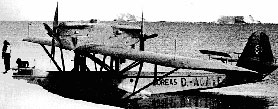 The true purpose of this expedition has never been satisfactorily explained;
we are merely left with a series of puzzles, related reports and snippets of
information that are no longer open to verification. The true purpose of this expedition has never been satisfactorily explained;
we are merely left with a series of puzzles, related reports and snippets of
information that are no longer open to verification.
What is not open to
doubt however, is that in the decade preceding the Second World War, the
Germans did almost nothing that did not put the entire structure of the
country on a war footing.
This activity affected all aspects of German life; military, civilian,
economic, social and foreign policies, engineering, industry etc.
Given that
the seizing of Neu-Schwabenland occurred on the very eve of the war, it can
only be concluded that that the polar expedition was of major importance and
significance to the goals and development of the planned 1000-year Third
Reich.
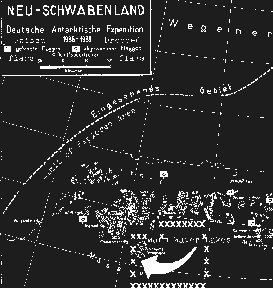 And this ‘invasion’ was certainly not the end to German activity in the
area; rather the prelude, providing support for the idea that Germany might
have established a base on the apparently frozen wasteland
(click left image). And this ‘invasion’ was certainly not the end to German activity in the
area; rather the prelude, providing support for the idea that Germany might
have established a base on the apparently frozen wasteland
(click left image).
That German activity continued around Antarctica through the war years is a
matter of historical record.
In 1939, the ship ‘Schleswig-Holstein’ is
reported to have inspected Iles Kerguelen, Ile Saint-Paul, Ile Amsterdam,
Iles Crozet, Prince Edward Islands, and Gough Island and later visited
Cape
Town
(10).
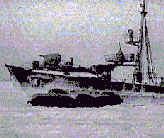 During the period 1939
- 1941
Captain Bernhard Rogge of the raider ship
‘Atlantis’ (pictured right in the icy waters off Antarctica) made an extended
voyage in the South Atlantic, Indian and South Pacific Oceans, and visited
the Iles Kerguelen between December 1940 to January 1941 (burying a seaman
at Bassin de la Gazelle). During the period 1939
- 1941
Captain Bernhard Rogge of the raider ship
‘Atlantis’ (pictured right in the icy waters off Antarctica) made an extended
voyage in the South Atlantic, Indian and South Pacific Oceans, and visited
the Iles Kerguelen between December 1940 to January 1941 (burying a seaman
at Bassin de la Gazelle).
The Atlantis is known to have been visited by an RFC-2 (the ‘UFO’
style
craft which had served as a reconnaissance aircraft since late 1940.)
The
ship then adopted a new disguise as Tamesis before being sunk by HMS
Devonshire near Ascension Island, on 22nd November 1941 (the
Atlantis was
also known as Hilfskreuzer 16 and was, at various times, disguised as
Kasii-Maru or Abbekerk.) (11)
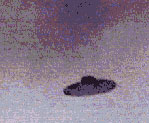 Although the activities of the German ship
Erlangen, under the captaincy of
Alfred Grams, do not appear to be of consequence during 1939-40, the same
cannot be said of the Komet which was commanded by Captain Robert Eyssen. Although the activities of the German ship
Erlangen, under the captaincy of
Alfred Grams, do not appear to be of consequence during 1939-40, the same
cannot be said of the Komet which was commanded by Captain Robert Eyssen.
Following her passage along the Northern Sea Route in 1940, this commerce
raider operated in the Pacific and Indian oceans, including a voyage along
the Antarctic coastline from Cape Adare to the Shackleton Ice Shelf in
search of whaling vessels during February 1941.
There she met the Pinguin
and supply vessels Alstertor and Adjutant. (Komet was also known as
Hilfskreuzer 45 and was sunk off Cherbourg in 1942.)
(12)
The Pinguin itself under the command of Captain Ernst-Felix Kruder was a
commerce raider that operated chiefly in the Indian Ocean. In January 1941
she captured a Norwegian whaling fleet (factory ships Ole Wegger and
Pelagos,
supply ship Solglimt and eleven whale catchers) in about 59° S, 02° 30W. One
of these catchers (renamed Adjutant) remained as a tender and the rest were
sent to France.
This ship also made anchorages at the Iles Kerguelen and may
have landed a party on Marion Island. (Pinguin was sunk off the Persian Gulf
by HMS Cornwall0 on 8th May 1941 after she had captured 136,550 tons of
British and allied shipping.
She was also known as Hilfskreuzer 33, and
disguised herself at various times as Tamerlan, Petschura, Kassos and
Trafalgar.)
(13)
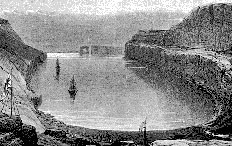 This
island of Kerguelen (named the ‘Most Useless Island In the World’ in
1995) continued to feature prominently in Nazi plans. For example, in 1942
the German Navy planned to establish a meteorological station there. This
island of Kerguelen (named the ‘Most Useless Island In the World’ in
1995) continued to feature prominently in Nazi plans. For example, in 1942
the German Navy planned to establish a meteorological station there.
In May
of that year the ship Michel (Hilfskreuzer 28) transferred a meteorologist
and two radio operators with full equipment to a supply vessel Charlotte Schlieman that went on to the island, however the orders for the station
were later counter-manded
(14).
(Kerguelen Island was also the centre of a
mid 19th Century mystery. Then entirely uninhabited, except for seals and
seabirds, British Captain Sir James Clark Ross landed there in May 1840.
He
found in the snow unidentifiable,
"traces … of the singular footprints of a
pony, or ass, being 3 inches in length and 2½ inches in breadth, having a
small deeper depression in either side, and shaped like a horseshoe."
Similar markings appeared overnight in the Devon area of England fifteen
years later and have also defied adequate explanation.)
Then in 1942 Captain Gerlach in his ship the ‘Stier’ investigated nearby
Gough Island as a possible temporary base for raiders and a camp for
prisoners. (Stier was also known as Hilfskreuzer 23.)
This ship activity does not appear considerable, however the level of U-boat
activity in the South Atlantic was much higher. The exact nature and extent
of how high will probably never be known, however some insight might be
gleaned from the fact that between October 1942 and September 1944 16 German
U-boats were sunk in the South Atlantic area (see Appendix
1).
Apart from their normal patrols, some of these submarines did appear to be
engaged in covert activities. For example submarine U-859 which, on 4th
April 1944 at 04.40hrs, left on a mission carrying 67 men and 33 tons of
mercury sealed in glass bottles in watertight tin crates.
The submarine was
later sunk on 23rd September by a British submarine (HMS Trenchant) in the
Straits of Malacca and although 47 of the crew died, 20 survived. Some 30
years later one of these survivors spoke openly about the cargo and divers
later confirmed the story on rediscovering the mercury. The significance
being that mercury is usable as a fuel source for certain types of aerospace
propulsion.
Why would a German submarine be transporting such a cargo so far
from home?
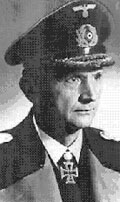 Although this is the known record of
Nazi activity around Antarctica before
8th May 1945 when Germany surrendered unconditionally to the Allies, events
after that date suggested something was happening that did not form a part
of recognized world history. Although this is the known record of
Nazi activity around Antarctica before
8th May 1945 when Germany surrendered unconditionally to the Allies, events
after that date suggested something was happening that did not form a part
of recognized world history.
Something fuelled by a statement made by
Karl Dönitz (left).
Dönitz (16th September 1891 - 24th December 1980) had become
Oberbefehlshaber der Kriegsmarine on 31st January 1943 and he led the
German
U-Boat fleet until the end of World War II. (Dönitz also has the distinction
of briefly becoming head of the German state for 20 days after Hitler’s
death until his own capture by the Allies on 23rd May 1945.)
His
contribution to the mystery of post-war Antarctic activity came in a
statement he made in 1943 when he declared that the German submarine fleet
had rebuilt,
"in another part of the world a Shangri-La land
- an impregnable
fortress."
Could he have been referring to the alleged base in
Antarctica?
Certainly there are records of continued German naval activity in the area
after the war had apparently ended. For example, on 10th July 1945, more
than two months after the cessation of known hostilities, the German
submarine U-530 surrendered to Argentine authorities. The background to this
event is puzzling.
It is known that the boat had left Lorient in France on
22nd May 1944 under the captaincy of Otto Wermuth for operations in the
Trinidad area, and after successfully rendezvousing with the incoming
Japanese submarine I-52, it headed for Trinidad before finally returning to
base after 133 days at sea.
The boat’s official record states that between October 1944 and May 1945 it
formed part of the 33rd Flotilla and on Germany’s surrender Otto Wermuth’s
captaincy and the submarine’s career came to an end. Yet two months later it
arrived in Rio de la Plata in Argentina and surrendered to the authorities
there on 10th July 1945.
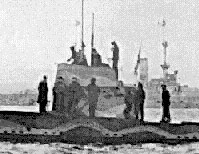 History also records that the
U-boat, U-977, left Kristiansand in Norway on
2nd May 1945 for combat patrol in the English Channel. History also records that the
U-boat, U-977, left Kristiansand in Norway on
2nd May 1945 for combat patrol in the English Channel.
After Germany’s
surrender, Captain Heinz Schäffer decided to head for the South Atlantic but
he first gave the married men on board the chance to go ashore; 16 of them
took Schäffer up the offer.
After a 66-day submerged trip, and a further run on the surface, U-977
arrived in Mar del Plata, Argentina on 17th August, and later surrendered to
the US in Boston on 13th November 1945 three months later. Its activities
during this period are unknown.
This incident occurred shortly after the end of the war, however, there
continued to be accounts of German activity for a considerable post-war
period. The French ‘Agence France Press’ on 25th September 1946 stated,
"the
continuous rumors about German U-boat activity in the region of Tierra del Fuego [‘Feuerland’ in
German] between the southernmost tip of Latin America
and the continent of Antarctica are based on true happenings."
Then the French newspaper, ‘France Soir’ gave the following account of an
encounter with such a German U-boat.
"Almost 1½ years after cessation of
hostilities in Europe, the Icelandic Whaler ‘Juliana’ was stopped by a
large
German U-boat.
The Juliana was in the Antarctic region around Malvinas
Islands [The Falklands] when a German submarine surfaced and raised the
German official Flag of Mourning - red with a black edge.
"The submarine commander sent out a boarding party, which approached the
Juliana in a rubber dingy, and having boarded the whaler demanded of
Capt. Hekla part of his fresh food stocks. The request was made in the definite
tone of an order to which resistance would have been unwise.
"The German officer spoke a correct English and paid for his provisions in
US dollars, giving the Captain a bonus of $10 for each member of the Juliana
crew. Whilst the foodstuffs were being transferred to the submarine, the
submarine commander informed Capt. Hekla of the exact location of a large
school of whales.
Later the Juliana found the school of whales where
designated."
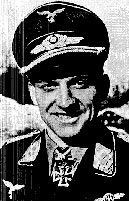 Could it be possible that other German U-boats, in addition to U-530 and
U-977 were continuing to operate in the area following the war? There are no
formal records of such activity, however it is known that 54 German U-boats
‘disappeared’ during the war, of which only 11 are likely to have met their
fate at the hands of mines (see
Appendix II). Could it be possible that other German U-boats, in addition to U-530 and
U-977 were continuing to operate in the area following the war? There are no
formal records of such activity, however it is known that 54 German U-boats
‘disappeared’ during the war, of which only 11 are likely to have met their
fate at the hands of mines (see
Appendix II).
The future may well reveal that fate of more of these submarines, however
given the French and South American reports, and the number of missing
U-boats, it may not be unreasonable to conclude that at least some of them relocated to the South Polar area.
History also gives us further clues as to a
Nazi-Antarctica connection, for
it records that Hans-Ulrich Rudel of the German Luftwaffe (left) was being
groomed by Hitler to be his successor. It is known that Rudel made frequent
trips to Tierra del Fuego at the tip of South America nearest Antarctica.
And one of Martin Bormann’s last messages from the bunker in Berlin to
Dönitz also mentioned Tierra del Fuego.
Then there are claims about Rudolph Hess (below right), Hitler’s best friend who
went to England and was arrested as a war criminal on 10th May 1941.
Following his arrest, Hess was held in Spandau Prison in isolation until his
death.
Such unique treatment is suggestive that he had information that the
Allies considered dangerous. Indeed, in his book ‘Secret Nazi Polar
Expeditions’ Christof Friedrich states Hess,
"was entrusted with the
all-important Antarctic file … Hess, himself, kept the Polar file…"
(15)
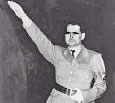 However, for
Operation High Jump to have been an attempt to ferret out a
remaining Nazi base on the Antarctic continent, there would have been two
prerequisites. However, for
Operation High Jump to have been an attempt to ferret out a
remaining Nazi base on the Antarctic continent, there would have been two
prerequisites.
Firstly, Operation High Jump would have to provide evidence
that the mission included a reconnaissance of Neu-Swabenland and secondly,
there would have to be an area of the frozen continent that could allow such
a base to exist throughout the year. And indeed both criteria are met.
Both the Eastern and Western Groups of Operation High Jump had been active
around Neu-Schwabenland.
So was a Russian boat that "proved to be
unfriendly"
(16).
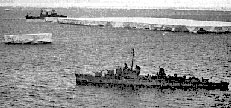 The
Eastern group were frustrated in their efforts to make a reconnaissance
of the area, despite incredible efforts to secure photographs for later
examination. The
Eastern group were frustrated in their efforts to make a reconnaissance
of the area, despite incredible efforts to secure photographs for later
examination.
However by then,
"it was very late in the season ... The sun had
only been briefly glimpsed in the past few weeks, but everyone could tell
that the continually grey skies and clouds were darkening daily. In another
month all light would be gone from Antarctica….
The waters girdling the
continent would begin to freeze rapidly, binding unwary ships in a crushing
embrace… Dufek [the commander] was loath to surrender. He ordered his ships
northwards away from the pack.
Perhaps one or two more flights might be
possible. But on the morning of 3 March … virgin ice was seen to be forming
on the water’s surface [and the] Eastern group steamed out of Antarctica.
(17)"
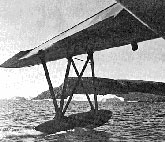 The
Western Group, however, were to make a remarkable discovery. The
Western Group, however, were to make a remarkable discovery.
At the end
of January 1947 a PBM piloted by Lieutenant Commander David Bunger of
Coronado, California, flew from his ship, the Currituck and headed towards
the continent’s Queen Mary Coast.
On reaching land, Bunger flew west for a
time, then, coming up over the featureless, white horizon, he saw a dark,
bare area which Byrd later described as,
"a land of blue and green lakes and
brown hills in an otherwise limitless expanse of ice."
(18)
Bunger and his men carefully reconnoitered the area before racing back to the
Currituck with news of their find.
The ‘oasis’ they had discovered covered
an area of some three hundred square miles of the continent and contained
three large, open water lakes along with a number of smaller lakes. These
lakes were separated by masses of barren, reddish-brown rocks possibly
indicating the presence of iron ore.
Several days later, Bunger returned to the area, and found that the water
was warm to the touch and the lake itself was filled with red, blue and
green algae giving it a distinctive colour. Bunger filled a bottle with the
water which later,
"turned out to be brackish, a clue to the fact that the
‘lake’ was actually an arm of the open sea."
(19)
This is important for two reasons; warm, inland lakes connected to the
surrounding oceans would be perfect for submarines to hide within, and
similar lakes have been noted in Neu-Schwabenland, the site of the alleged
Nazi base.
There is no conclusive evidence of a Nazi base on Antarctica,
however that something untoward was happening on, or around, the frozen
continent appears, on balance of probabilities, to be likely.
The evidence
is there:
-
The Germans invaded and claimed part of
Antarctica on the very eve of the
war when all of their activity was geared towards the war machine and the
establishment of a 1000-year Reich.
-
There was ongoing ship and submarine activity in the
South Atlantic and
polar regions throughout and after the war had apparently ended.
-
The US invaded the continent itself with considerable naval resources
leaving mainland America exposed and vulnerable as the world edged into the
Cold War. The task force limped home as if defeated only weeks later, and
the local South American press wrote of such a defeat.
-
Admiral Byrd spoke of objects that could fly from pole to pole at
incredible speeds being based on Antarctica.
-
Hundreds of thousands of Germans and numerous U-boats were missing at the
end of the war.
The connection between Antarctica and the UFO phenomenon was sealed with
claims made by one Albert K. Bender who stated that he,
"went into the
fantastic and came up with an answer … I know what the saucers are."
Part III - The Antarctic Enigma
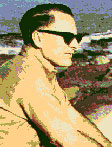 Albert Bender ran an
organization called the ‘International Flying Saucer
Bureau’ a small UFO organization based in Connecticut, USA and he also
edited a publication known as the ‘Space Review’ which was committed to the
dissemination of news about UFOs. Albert Bender ran an
organization called the ‘International Flying Saucer
Bureau’ a small UFO organization based in Connecticut, USA and he also
edited a publication known as the ‘Space Review’ which was committed to the
dissemination of news about UFOs.
In truth, the organization had only a
small membership and the publication circulated amongst hundreds rather than
thousands, but that its members and readers valued it was in little doubt.
The publication itself advocated that flying saucers were spacecraft of
extraterrestrial origin.
Then, in the October 1953 edition of ‘Space Review’, there were two major
announcements. The first was headed ‘Late Bulletin’ and stated:
"A source
which the IFSB considers very reliable has informed us that the
investigation of the flying saucer mystery and the solution is approaching
final stages. This same source to whom we had referred data, which had come
into our possession, suggested that it was not the proper method and time to
publish the data in Space Review."
The second announcement read:
"Statement of Importance: The mystery of the
flying saucers is no longer a mystery. The source is already known, but any
information about this is being withheld by order from a higher source.
We
would like to print the full story in Space Review, but because of the
nature of the information we are very sorry that we have been advised in the
negative." The statement ended in the sentence "We advise those engaged in
saucer work to please be very cautious."
These announcements were of little significance in themselves.
What gained
them wider attention was the fact that immediately after publishing this
October 1953 issue, Bender suspended further publication of the magazine and
closed the IFSB down without any further explanation.
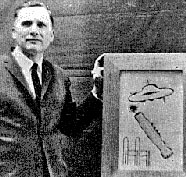 Bender might have known "what the flying saucers" were, but he later
revealed in a local newspaper interview that he was keeping his knowledge a
secret following a visit by three men who apparently confirmed he was right
about his UFO theory, but put him in sufficient fear to immediately close
down his organization and cease publication of the journal. Bender might have known "what the flying saucers" were, but he later
revealed in a local newspaper interview that he was keeping his knowledge a
secret following a visit by three men who apparently confirmed he was right
about his UFO theory, but put him in sufficient fear to immediately close
down his organization and cease publication of the journal.
It has been
argued that the story of being visited by three strangers and being ‘warned
off’ was a front to close a publication that was losing money, however the
fact that Bender had been "scared to death" and "actually couldn’t eat for a
couple of days" was verified by his friends and associates.
However, in 1963, a full decade after his visit from the three strangers,
Bender was seemingly prepared to reveal more of his story in a largely
unreadable book entitled ‘Flying Saucers and the Three Men in Black.’
The
book was scant on facts however intriguingly described extraterrestrial
spacecraft that had bases in Antarctica.
This was apparently the truth
Bender was terrorized into not revealing. Bender also provided images of the
saucers he was aware of. Yet again we see a drawing of his UFO with the
three bubbles underneath, reminiscent of the
Haunebu II alongside a cigar
shaped object, of which more later.
Ernst Zundel, a German scientist turned author who had entered the US under
Operation Paperclip at the end of the war and who worked at
Wright Field
(later Wright Patterson AFB where the alleged Roswell debris was housed),
also made claims about the nature of the activity in Antarctica.
In the 1970s Zundel wrote a book ‘UFOs: Nazi Secret Weapons?’ in which he
claimed that UFOs were
secret Nazi weapons developed during the Second World
War, and some of them had been shipped out towards the end of the war and
hidden at the poles.
Publication of the book coincided with a tidal wave of
renewed interest in all things spiritual, and Zundel was invited on to
countless talk shows to share his views on spaceships, free energies,
electromagnetism, emergent technologies and some of the positive
contributions made by the Germans under the Third Reich in these fields
(26).
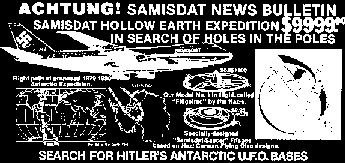 Zundel was actually only really interested in promoting his holocaust
theory, described in his book ‘Did Six Million Really Die?’ however found
that his Nazi and ‘Hollow Earth’ ideas proved a greater attraction to
television producers. Zundel was actually only really interested in promoting his holocaust
theory, described in his book ‘Did Six Million Really Die?’ however found
that his Nazi and ‘Hollow Earth’ ideas proved a greater attraction to
television producers.
Zundel explains:
"I realized that North Americans were
not interested in being educated. They want to be entertained. The book was
for fun. With a picture of the Fuhrer on the cover and flying saucers coming
out of Antarctica it was a chance to get on radio and TV talk shows.
For
about 15 minutes of an hour program I’d talk about that esoteric stuff.
Then
I would start talking about all those Jewish scientists in concentration
camps, working on these secret weapons. And that was my chance to talk about
what I wanted to talk about."
(27)
The idea however, gripped the popular imagination and took on a life of its
own. Zundel’s publishing company, ‘Samisdat’, started to make a name for
itself by issuing newsletters and books on the subject. An expedition to
Antarctica itself was even proposed to seek out ‘Hitler’s
UFO bases’ there.
(click image above)
Yet such claims would have died out had they not been based on at least some
real events. That something strange was happening around the foreboding
continent took an interesting turn in the 1960s when the Argentine Navy was
charged with the official investigation into strange sightings in the sky.
A
1965 official report prepared by Captain Sanchez Moreno of the Naval Air
Station, Comandante Espora in Bahia Blanca stated:
"Between 1950 and 1965, personnel of Argentina’s Navy alone made 22
sightings of unidentified flying objects that were not airplanes,
satellites, weather balloons or any type of known (aerial) vehicles. These
22 cases served as precedents for intensifying that investigation of the
subject by the Navy
(20)."
Following a series of sightings at Argentine and
Chilean meteorological stations on Deception Island, Antarctica, in June and
July 1965, Captain Engineer Omar Pagani disclosed at a press conference that,
"the unidentified flying objects do exist. Their presence in Argentine
airspace is proven. Their nature and origin are unknown and no judgment is
made about them."
(21)
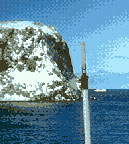 More details of these
UFO sightings were given in a report in the Brazilian
newspaper ‘O Estado de Sao Paulo’ in its 8th July 1965 edition. More details of these
UFO sightings were given in a report in the Brazilian
newspaper ‘O Estado de Sao Paulo’ in its 8th July 1965 edition.
"For the
first time in history, an official communiqué has been published by a
government about the flying saucers.
It is a document from the Argentine
Navy, based on the statements of a large number of Argentine, Chilean and
British sailors stationed in the naval base in Antarctica.
The communiqué declared that the personnel of
Deception Island (left) naval
base saw, at nineteen hours forty minutes on 3 July, a flying object of lenticular shape, with a solid appearance and a colouring in which red and
green prevailed and, for a few moments, yellow.
The machine was flying in a zig-zag fashion, and in a generally western direction, but it changed course
several times and changed speed, having an inclination of about forty-five
degrees above the horizon. The craft also remained stationary for about
twenty minutes at a height of approximately 5,000 meters, producing no
sound.
The communiqué states moreover that the prevailing meteorological conditions
when the phenomenon was observed can be considered excellent for the region
in question and the time of year. The sky was clear and quite a lot of stars
were visible.
The Secretariat of the Argentine Navy also states in its communiqué that the
occurrence was witnessed by scientists of the three naval bases and that the
facts described by these people agree completely."
(22)
In March 1950 Commodore Augusto Vars Orrego of the Chilean Navy shot still
pictures and 8mm movie footage of a very large cigar shaped flying object
that hovered over and maneuvered about in the frigid skies above the Chilean
Antarctic.
Orrego stated,
"during the bright Antarctic night, we saw flying
saucers, one above the other, turning at tremendous speeds. We have
photographs to prove what we saw
(23)."
There have been other Chilean
sightings.
Then during January 1956 an event was witnessed by a group of Chilean
scientists who had been flown by helicopter to Robertson Island in the
Wendell Sea to study geology, fauna and other features.
This experience was
the subject of a later article entitled ‘A Cigar-Shaped UFO over
Antarctica.’
"At the beginning of January 1956, during a period of stormy
weather, the party suddenly became aware of something which, in other
circumstances, could have been very grave for them.
This was that their
radio had mysteriously ceased to function. This was not too worrying a
disaster in so much as it was firmly settled that the helicopter would
return to take them off again on January 20."
One of the scientists, a doctor, was in the habit of getting up in the night
to observe anything of meteorological interest, but another of the group, a
professor, did not like to be disturbed.
However on the night of 8th January
1956, the Doctor decided to wake the professor. He,
"pointed upwards, almost
overhead. Still in a bad temper through being disturbed, [the professor]
looked as directed, and beheld two ‘metallic’ cigar-shaped objects in verticular positions, perfectly still and silent, and flashing vividly the
reflected rays of the sun."
Soon after 7.00am, two other members of the party, an assistant and a
medical orderly joined the two men.
The group watched the two craft.
"At
about 9.00am object No. 1 (the nearest to the zenith) suddenly assumed a
horizontal posture and shot away like a flash towards the west. It had now
lost its metallic brightness and had taken on the whole gamut of visible colours of the spectrum, from infrared to ultra-violet.
"Without slowing down it performed an incredible acute-angle change of
direction, shot off across another section of the sky and then did another
sharp turn as before. These vertiginous maneuvers, the zig-zagging, abrupt
stopping, instantaneous accelerating, went on for some time right overhead,
the object always following tangential trajectories in respect to the Earth
and all in the most absolute silence.
"The demonstration lasted about five minutes. Then the object returned and
took up position beside its companion in almost the same area of the sky as
before, but now it was the turn of No. 2 to show its paces and do a weird
zigzagging dance.
Shooting off towards the east, it performed a series of
ten dispointed bursts of flight, broken by brusque changes of direction, and
marked by the same colour changes when accelerating or stopping, and so on.
After about three minutes of this, object No. 2 returned and took up its
station near its companion, and reassumed its original solid and metallic
appearance.
"The scientists had with them two Geiger-Miller counters of high
sensitivity, one of the auditory and the other of the flash-type.
When the
two objects had finished their dance and reassumed their stations in the
sky, someone discovered that the flash-type Geiger counter now showed that
radioactivity around them had suddenly increased 40 times - enough to kill
any organism subjected long enough to it. The discovery greatly increased
the anxiety felt by the four men …
"Although they had no telescopic lens, they did however have cameras with
them, and they took numerous photographs of the objects, both in colour and
black and white. We are not told in the report what became of these
photographs."
(24).
Five years later there was another documented account of a UFO sighting over
Antarctica by Rubens Junqueira Villela, a meteorologist and the first
Brazilian scientist to participate in an expedition to the white continent,
now a veteran of eleven expeditions to Antarctica (two with the US Navy,
eight with the Brazilian Antarctic Programme and another on the sailing ship Rapa Nui).
Whilst on board the US Navy icebreaker Glacier (below
right) which had
set sail from New Zealand at the end of January 1961, Villela claims that he
witnessed a UFO event in the skies over Antarctica which he immediately
recorded in his diary, even including the emotions felt by all those
involved.
During 16th March 1961 and after a fierce storm had forced the
expedition to retreat to Admiralty Bay in the King George Isles,
"a strange
light suddenly crossed the sky, and everyone started to shout.
"‘It’s a missile!’ said one excited Marine. ‘No, it’s a meteor,’ barked
another member of the crew. The excitement was wide-spread and growing.
Trying to describe the light which appeared over Almirantado Bay wasn’t easy… I wrote in my diary: ‘Positively the colors, the configuration and
contours of the object, as a bodied [sic] light, with geometric forms, did
not seem to be from this world, and I did not know what could possibly
reproduce it."
"The object was multi-colored and had a luminous body
- oval-shaped. It left
a long tube-like orange/red trail. Suddenly, it split into two pieces, as if
it had exploded. Each part shone even more intensively, with white, blue and
red colors projecting ‘V’ shaped rays behind it. Quite quickly they moved
away and could be seen 200 meters above the ground… Throughout the sighting
no noise was heard by any of the witnesses."
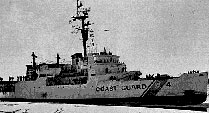 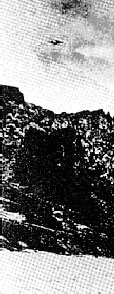 "The US Navy officially registered the incident as "a meteor or some other
natural luminous phenomenon" according to the report submitted by the
Glacier’s captain, Captain Porter. "The US Navy officially registered the incident as "a meteor or some other
natural luminous phenomenon" according to the report submitted by the
Glacier’s captain, Captain Porter.
As a trained meteorologist,
Villela easily dismissed the official line. "How
could they mistake a meteor with an object carrying antennae, completely
symmetrical and followed by a tail without any sight of atmospheric
disturbance?"
(25)
The renowned
skeptic and self-styled debunker, Phillip Klaus, believes this
episode is a classic example of ‘plasma’, however the late meteorologist,
James McDonald argued that the highly structured nature of the object and
the low cloud overcast present at about 1500 feet were not compatible with
Klass’s hypothesis.
The South Atlantic area was also host to another sighting on 16th January
1958 when the Brazilian naval vessel Almirante Salddanha was escorting a
team of scientists to a weather station on Trindade Island.
As the ship
approach the island (or rather an outcrop of rock) a UFO reportedly swooped
past the ship, circled the island, then flew off in front of dozens of
witnesses.
One of these witnesses, the expedition photographer, took a number of
photographs of the object, and later the film was handed over to the
military by the Captain. After analysis, the Brazilian government released
the film stating that they were unable to account for the images.
Whatever was going on in the Antarctic region, it certainly wasn’t happening
in isolation.
Appendix 1
|
The following lists all the U-boats that
disappeared during the Second World War for which there is no explanation
available (the fate of all other U-boats is meticulously recorded).
It is
possible that new data may become available to account for these
‘disappearances’, and it certainly should not be assumed that these submarines
all made their way to Antarctica.
Where a possible explanation has been
suggested, this is recorded in the comments column.
Boat Date missing
Last known location
Comments
U-22 23.03.40
Jammer Bay
Possibly lost by mine.
U-54 20.02.40
North Sea
Possibly lost by mine.
U-122 22.06.40
Baby of Biscay
U-104 28.11.40
North-west of Ireland Possibly lost by
mine.
U-47 07.03.41
North Atlantic
U-206 29.11.41
Bay of Biscay
Possibly lost by mine.
U-578 06.08.42
Bay of Biscay
U-116 .10.42
North Atlantic
U-184 21.11.42
North Atlantic
U-337 03.01.43
North Atlantic
U-553 .01.43
North Atlantic Presumed sunk.
U-519 31.01.43
Bay of Biscay
U-529 12.02.43
North Atlantic
U-376 13.04.43
Bay of Biscay
U-209 07.05.43
North Atlantic
U-381 21.05.43
South Greenland
U-647 22.07.43
North of Shetlands Possibly lost by mine.
U-84 26.08.43
North Atlantic
U-669 08.09.43
Bay of Biscay
U-338 20.09.43
North Atlantic
U-420 20.10.43
North Atlantic
U-86 14.12.43
North Atlantic
U-364 31.01.44
Bay of Biscay
U-666 10.02.44
North Atlantic
U-851 27.03.44
North Atlantic Presumed sunk.
U-335 04.04.44
Arctic Sea
U-455 06.04.44
Ligurian Sea
U-193 23.04.44
Bay of Biscay
U-240 17.05.44
Off Norway
U-740 06.06.44
English Channel
U-1191 12.06.44
English Channel
U-743 21.08.44
North Atlantic
U-180 23.08.44
Bay of Biscay
U-925 24.08.44
North Atlantic
U-865 09.09.44
Norway
U-703 16.09.44
Iceland
U-921 02.10.44
Norway
U-479 15.11.44
Finland
U-196 01.12.44
South of Java Possible accident.
U-482 .12.44
North Sea Possibly lost by mine.
U-650 09.12.44
North Atlantic
U-1020 31.12.44
North Sea
U-297 03.01.45
North Atlantic
U-745 30.01.45
Finland Possibly lost by mine.
U-327 30.01.45
North Atlantic
U-683 20.02.45
North Atlantic
U-296 12.03.45
North Channel Possibly lost by mine.
U-1055 23.03.45
North Atlantic
U-246 05.04.45
Not known.
U-325 07.04.45
North Atlantic
U-398 17.04.45
North Atlantic
U-857 .04.45
North Atlantic
U-396 .04.45
Not known
|
Appendix 2
|
The following lists all the U-boats that were sunk in the South
Atlantic during the Second World War.
Boat: Date
sunk: Boat:
Date sunk:
U-179 08.10.42
U-199
31.07.43
U-164 06.01.43
U-604
11.08.43
U-507 13.01.43
U-161
27.09.43
U-128 17.05.43
U-848
05.11.43
U-513 19.07.43
U-849
25.11.43
U-598 23.07.43
U-860
15.06.44
U-591 30.07.43
U-863
29.09.44
|
References
(1) Rose, Lisle, ‘Assault on Eternity’ p35, Naval Institute Press, Maryland,
1980.
(2) Ibid p 35.
(3) Ibid p 35.
(4) Ibid pp 35-36
(5) ‘Antarctica’, p267 Reader’s Digest, Capricorn Press, London, 1985
(6) Ibid p.267
(7) Rose, Lisle, ‘Assault on Eternity’ p.250, Naval Institute Press,
Maryland, 1980.
(8) ‘Antarctica’, p264 Reader’s Digest, Capricorn Press, London, 1985
(9) Headland, R.K., ‘Chronological List of Antarctic Expeditions and Related
Historical Events’ p.300 Cambridge University Press 1989.
(10) Headland, R.K., ‘Chronological List of Antarctic Expeditions and
Related Historical Events’ p.301 Cambridge University Press 1989.
(11) Ibid. p. 301
(12) Ibid. p. 303
(13) Ibid. p. 303
(14) Ibid. p. 305
(15) Christof Friedrich "Secret Nazi Polar Expeditions"
(16) Rose, Lisle, ‘Assault on Eternity’ p165, Naval Institute Press, Maryland,
1980.
(17) Ibid pp 166-167
(18) Ibid p175
(19) Ibid p177
(20) Good p264.
(21) Good p264. From Informe Oficial O.V.N.I., Summary S# A.02778-DTO, OVNI,
Captain Sanchez Moreno, Naval Air Station Comandante Espora, published in
1979 by Major (Ret.) Colman VonKevickz, ICUFON, 35-40 75th Street, Suite 4G,
Jackson Heights, New York, NY 11372.
(22) ‘O Estado de Sao Paulo’ 8th July 1965 reproduced in an article by Dan Lloyd,
‘Things are hotting up in the Arctic’ Flying Saucer review, Vol. 11, No. 5.
September-October 1965.
(23) Arnold, Kenneth and Palmer, Ray, ‘The Coming of the Saucers’ p. 132
privately published by the authors at Boise, Idaho and Amherst, Wisconsin,
1952.
(24) Creighton, Gordon W., ‘A Cigar-Shaped UFO over Antarctica’ Flying Saucer
Review, Vol. 14, No. 2, March-April 1968.
(25) Rubens Junqueira Villela, ‘UFOs in Antarctica’ Translated by Ricky Seraphico
and republished in UFO Magazine November/December 1998. First published in
‘Revista UFO Brasil’, May 1998. Original title ‘Discos Voadores Na
Antarctica.’ See also US Congress, House Committee on Science and
Astronautics, Symposium on Unidentified Flying Objects, Hearings. Ninetieth
Congress, Second Session 29th July 1968, Washington DC. US Government
Printing Office, 1968.
(26) Hoffman, M., ‘The Great Holocaust Trial’ P 18, Institute for Historical
Review, Torrance, California, 1985
(27) Miele, Frank, ‘Giving the Devil His Due’
|

 This invasion of the continent of
Antarctica was named ‘Operation High Jump’
and comprised of some 4700 military personnel, six helicopters, six Martin PBM flying boats, two seaplane tenders, fifteen other aircraft, thirteen US
Navy support ships and one aircraft carrier: the USS Philippine Sea (right).
This invasion of the continent of
Antarctica was named ‘Operation High Jump’
and comprised of some 4700 military personnel, six helicopters, six Martin PBM flying boats, two seaplane tenders, fifteen other aircraft, thirteen US
Navy support ships and one aircraft carrier: the USS Philippine Sea (right). However, the official instructions issued by the then Chief of Naval
Operations, Chester W. Nimitz (left), himself of German descent, were:
However, the official instructions issued by the then Chief of Naval
Operations, Chester W. Nimitz (left), himself of German descent, were: Admiral Byrd (centre
- image right), was a strategic choice as he was a national hero to
the Americans; he had pioneered the technology that would be a foundation
for modern polar exploration and investigation, had been repeatedly
decorated, had undertaken many expeditions to Antarctica and was also the
first man to fly over both poles.
Admiral Byrd (centre
- image right), was a strategic choice as he was a national hero to
the Americans; he had pioneered the technology that would be a foundation
for modern polar exploration and investigation, had been repeatedly
decorated, had undertaken many expeditions to Antarctica and was also the
first man to fly over both poles.  The main force was divided into three groups. The
Central Group comprised of
the USS Mt. Olympus (communications); USS Yancey (supply); USS Merrick
(Supply); USS Sennet (submarine); USCGC Burton Island (Icebreaker) and
USCGC
Northwind (icebreaker.)
The main force was divided into three groups. The
Central Group comprised of
the USS Mt. Olympus (communications); USS Yancey (supply); USS Merrick
(Supply); USS Sennet (submarine); USCGC Burton Island (Icebreaker) and
USCGC
Northwind (icebreaker.)
 Following its arrival at Antarctica, the force began a reconnaissance of the
continent. Byrd himself was onboard the first of the planes to take off on
29th January 1947.
Following its arrival at Antarctica, the force began a reconnaissance of the
continent. Byrd himself was onboard the first of the planes to take off on
29th January 1947.
 Then the mission that had been expected to last for between 6-8 months, came
to an early and faltering end. The Chilean press reported that the mission
had "run into trouble" and that there had been "many fatalities".
Then the mission that had been expected to last for between 6-8 months, came
to an early and faltering end. The Chilean press reported that the mission
had "run into trouble" and that there had been "many fatalities".
 Quite what was going on is still not a matter of public record, however it
is known that Byrd was immediately summoned to Washington and interrogated
by the Security Services on his return after being initially ‘welcomed back’
by Secretary of War James Forrestal (right) on 14th April 1947. (Forrestal
was late to commit suicide.)
Quite what was going on is still not a matter of public record, however it
is known that Byrd was immediately summoned to Washington and interrogated
by the Security Services on his return after being initially ‘welcomed back’
by Secretary of War James Forrestal (right) on 14th April 1947. (Forrestal
was late to commit suicide.) The Germans had long held an interest in the South Polar region of
Antarctica with the first Germanic research of that area being undertaken in
1873 when Sir Eduard Dallman (1830-1896) discovered new Antarctic routes
with his ship ‘Grönland’ during his expedition for the
German polar
Navigation Company of Hamburg.
The Germans had long held an interest in the South Polar region of
Antarctica with the first Germanic research of that area being undertaken in
1873 when Sir Eduard Dallman (1830-1896) discovered new Antarctic routes
with his ship ‘Grönland’ during his expedition for the
German polar
Navigation Company of Hamburg. A further expedition took place in the early years of the twentieth century
in the ship the Gauss (which became embedded in the ice for 12 months
- left), and then a further expedition took place in 1911 under the command
of Wilhelm Filchner (right) with his ship the ‘Deutchland’.
A further expedition took place in the early years of the twentieth century
in the ship the Gauss (which became embedded in the ice for 12 months
- left), and then a further expedition took place in 1911 under the command
of Wilhelm Filchner (right) with his ship the ‘Deutchland’.  Then, in the years directly preceding the Second World War, the Germans laid
claim to parts of Antarctica in order to set up a permanent base there.
Then, in the years directly preceding the Second World War, the Germans laid
claim to parts of Antarctica in order to set up a permanent base there.
 These ‘Wals’ were launched by catapult from the
Schwabenland and had to be
accelerated to 93mph before they could become airborne. At the end of each
flight a crane on the ship lifted the aircraft back on board after they
landed in the sea.
These ‘Wals’ were launched by catapult from the
Schwabenland and had to be
accelerated to 93mph before they could become airborne. At the end of each
flight a crane on the ship lifted the aircraft back on board after they
landed in the sea. The expedition then spent three weeks off Princess Astrid Coast and Princess
Martha Coast off Queen Maud Land
The expedition then spent three weeks off Princess Astrid Coast and Princess
Martha Coast off Queen Maud Land  These pictures showed that some of the older Norwegian maps of the area from
1931 were not only inaccurate, but occasionally fabricated, as the original
‘maps’ bore no resemblance to the photographic images now obtained.
These pictures showed that some of the older Norwegian maps of the area from
1931 were not only inaccurate, but occasionally fabricated, as the original
‘maps’ bore no resemblance to the photographic images now obtained.
 The true purpose of this expedition has never been satisfactorily explained;
we are merely left with a series of puzzles, related reports and snippets of
information that are no longer open to verification.
The true purpose of this expedition has never been satisfactorily explained;
we are merely left with a series of puzzles, related reports and snippets of
information that are no longer open to verification.

 During the period 1939
- 1941
Captain Bernhard Rogge of the raider ship
‘Atlantis’ (pictured right in the icy waters off Antarctica) made an extended
voyage in the South Atlantic, Indian and South Pacific Oceans, and visited
the Iles Kerguelen between December 1940 to January 1941 (burying a seaman
at Bassin de la Gazelle).
During the period 1939
- 1941
Captain Bernhard Rogge of the raider ship
‘Atlantis’ (pictured right in the icy waters off Antarctica) made an extended
voyage in the South Atlantic, Indian and South Pacific Oceans, and visited
the Iles Kerguelen between December 1940 to January 1941 (burying a seaman
at Bassin de la Gazelle).  Although the activities of the German ship
Erlangen, under the captaincy of
Alfred Grams, do not appear to be of consequence during 1939-40, the same
cannot be said of the Komet which was commanded by Captain Robert Eyssen.
Although the activities of the German ship
Erlangen, under the captaincy of
Alfred Grams, do not appear to be of consequence during 1939-40, the same
cannot be said of the Komet which was commanded by Captain Robert Eyssen.
 This
island of Kerguelen (named the ‘Most Useless Island In the World’ in
1995) continued to feature prominently in Nazi plans. For example, in 1942
the German Navy planned to establish a meteorological station there.
This
island of Kerguelen (named the ‘Most Useless Island In the World’ in
1995) continued to feature prominently in Nazi plans. For example, in 1942
the German Navy planned to establish a meteorological station there.
 Although this is the known record of
Nazi activity around Antarctica before
8th May 1945 when Germany surrendered unconditionally to the Allies, events
after that date suggested something was happening that did not form a part
of recognized world history.
Although this is the known record of
Nazi activity around Antarctica before
8th May 1945 when Germany surrendered unconditionally to the Allies, events
after that date suggested something was happening that did not form a part
of recognized world history.
 History also records that the
U-boat, U-977, left Kristiansand in Norway on
2nd May 1945 for combat patrol in the English Channel.
History also records that the
U-boat, U-977, left Kristiansand in Norway on
2nd May 1945 for combat patrol in the English Channel.
 Could it be possible that other German U-boats, in addition to U-530 and
U-977 were continuing to operate in the area following the war? There are no
formal records of such activity, however it is known that 54 German U-boats
‘disappeared’ during the war, of which only 11 are likely to have met their
fate at the hands of mines (
Could it be possible that other German U-boats, in addition to U-530 and
U-977 were continuing to operate in the area following the war? There are no
formal records of such activity, however it is known that 54 German U-boats
‘disappeared’ during the war, of which only 11 are likely to have met their
fate at the hands of mines ( However, for
Operation High Jump to have been an attempt to ferret out a
remaining Nazi base on the Antarctic continent, there would have been two
prerequisites.
However, for
Operation High Jump to have been an attempt to ferret out a
remaining Nazi base on the Antarctic continent, there would have been two
prerequisites.
 The
Eastern group were frustrated in their efforts to make a reconnaissance
of the area, despite incredible efforts to secure photographs for later
examination.
The
Eastern group were frustrated in their efforts to make a reconnaissance
of the area, despite incredible efforts to secure photographs for later
examination.
 The
Western Group, however, were to make a remarkable discovery.
The
Western Group, however, were to make a remarkable discovery.
 Albert Bender ran an
organization called the ‘International Flying Saucer
Bureau’ a small UFO organization based in Connecticut, USA and he also
edited a publication known as the ‘Space Review’ which was committed to the
dissemination of news about UFOs.
Albert Bender ran an
organization called the ‘International Flying Saucer
Bureau’ a small UFO organization based in Connecticut, USA and he also
edited a publication known as the ‘Space Review’ which was committed to the
dissemination of news about UFOs.
 Bender might have known "what the flying saucers" were, but he later
revealed in a local newspaper interview that he was keeping his knowledge a
secret following a visit by three men who apparently confirmed he was right
about his UFO theory, but put him in sufficient fear to immediately close
down his organization and cease publication of the journal.
Bender might have known "what the flying saucers" were, but he later
revealed in a local newspaper interview that he was keeping his knowledge a
secret following a visit by three men who apparently confirmed he was right
about his UFO theory, but put him in sufficient fear to immediately close
down his organization and cease publication of the journal.

 More details of these
UFO sightings were given in a report in the Brazilian
newspaper ‘O Estado de Sao Paulo’ in its 8th July 1965 edition.
More details of these
UFO sightings were given in a report in the Brazilian
newspaper ‘O Estado de Sao Paulo’ in its 8th July 1965 edition.

 "The US Navy officially registered the incident as "a meteor or some other
natural luminous phenomenon" according to the report submitted by the
Glacier’s captain, Captain Porter.
"The US Navy officially registered the incident as "a meteor or some other
natural luminous phenomenon" according to the report submitted by the
Glacier’s captain, Captain Porter.